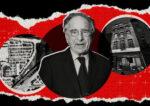Trending
SoBro’s best bets
From Mott Haven to Hunts Point, the nabes attracting the most investment in the borough
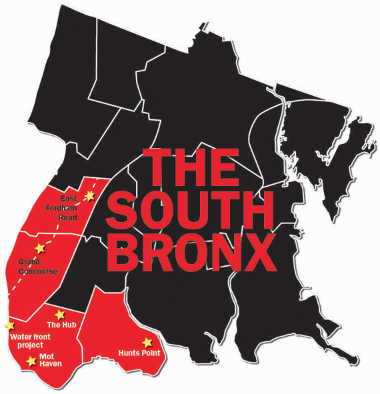
Developers and investors are pouring an increasing amount of capital into commercial and residential real estate projects in the Bronx, looking beyond the portions of Brooklyn and Queens where prices have skyrocketed, to gamble on what some hope is the next outerborough hot spot.
With easy commutes to Manhattan, lower prices than other boroughs, and development sites ripe for the picking, sources said “frontier” neighborhoods like Mott Haven, Hunts Point and Port Morris are generating new interest at all levels from developers, as well as hoteliers, retailers and restaurateurs looking to tap new markets.
The dollar volume of investment sales in the Bronx last year rose above $2 billion, a 39 percent increase from 2013, and a 55 percent jump from 2012, according to Ariel Property Advisors. While still a tiny fraction of what was spent in other boroughs, the increases reflect momentum.
“Development has been driven by a number of large lots that offer a tremendous potential that you just don’t see in other parts of the city,” said Scot Hirschfield, Ariel vice president.
An example is the Chetrit Group’s $32 million purchase of 101 Lincoln Avenue in the South Bronx in December. The developer plans to combine the 133,000-square-foot property, now home to a warehouse, with two adjacent sites to build at least six residential towers. The block is within the boundaries of the Lower Grand Concourse Waterfront Project, a strip along the Harlem River that borough leaders hope will eventually house 4,000 residential units.
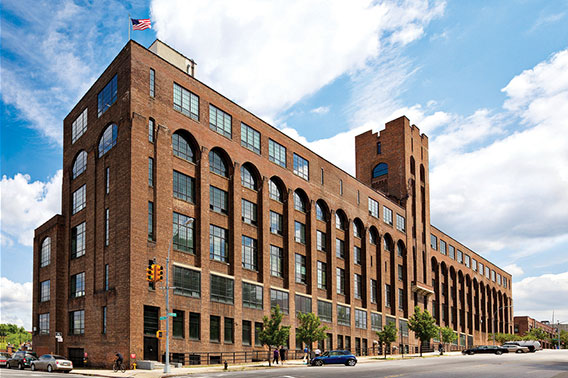
The BankNote Building in Hunts Point
On the commercial side, Midtown-based financial services firm Perella Weinberg and Washington-based real estate investment firm Madison Marquette shelled out $114 million in September to purchase the BankNote Building in Hunts Point, one of the most architecturally distinctive office properties in the Bronx. The firm bought the building from Taconic Investment Partners, which paid $32.5 million for it in 2007 and shelled out an additional $37 million to refurbish the landmarked property, which had once turned out foreign currencies and other financial documents.
Retail development is also on the rise. A prime strip along East Fordham Road was sold to the Harbor Group for $34.6 million in September. The two corner properties at 305-307 and 309-315 total more than 30,000 square feet and hold an additional 53,932 buildable square feet. Tenants of the existing two-story retail units include Planet Fitness, Metro PCS, the Vitamin Shoppe and Subway.
“The Bronx has much to offer,” said Greta Pryor, a broker with Charles Rutenberg, who has a nonprofit client negotiating for a 100,000-square-foot parcel near Yankee Stadium. “It’s diverse, land is available and you get a lot for your money.”
It’s clearly a bargain. With land prices ranging from $45 to $50 per buildable square foot, the Bronx is considerably cheaper than Manhattan, downtown Brooklyn and Queens neighborhoods like Long Island City, according to figures provided by Ariel. (See related story, page 66.) While prices haven’t budged much in the past five years, the numbers show that development interest is increasing. Last year alone, dollar volume increased by 88 percent, to $130 million in the neighborhoods of Hunts Point, Melrose, Mott Haven, Morrisania and Tremont. Over 40 transactions took place, comprised of 73 properties with 2 million buildable square feet.
“There are incentives to invest here,” added Hirschfield. “The land, infrastructure and added push from the city, state and local governments are enticing developers.”
Gentrification underway?
Neighborhoods like the Hub, a major retail center located in the Melrose area in the heart of the South Bronx, where East 149th Street and Willis, Melrose and Third avenues converge, are reaping the benefits of the renewed interest.
“This area is the next frontier,” said Adelaide Polsinelli, a broker with Eastern Consolidated, which is handling leasing at at least two retail properties along the Third Avenue strip. “This is where all the action is.”
In a little more than a year, Old Navy, The Gap and Planet Fitness moved in, along with two new boutique hotels, the borough’s first.
In September, the 56-room Umbrella Hotel opened its doors at 681 Elton Street. Developed by Bronxite Manny Chadha of AMG Elton, the luxury lodging boasts a rooftop bar and cigar lounge. Guests pay between $129 and $159 a night.
The Umbrella’s debut followed the 2013 opening of the Opera House Hotel. The converted century-old theater, where the Marx Brothers and Harry Houdini once performed, stands on East 149th Street and Bergen Avenue.
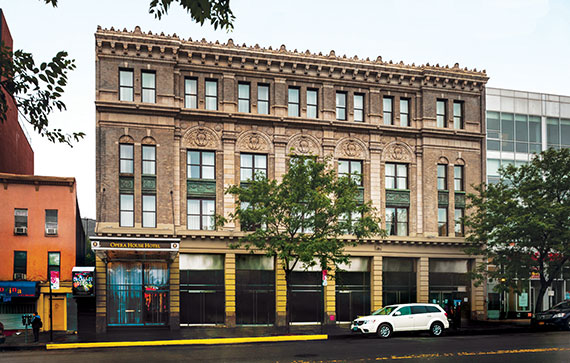
The Opera House Hotel
Next door to the Opera House Hotel, a large, new retail complex is targeted for the neighborhood. The Triangle Plaza Hub, a $35 million 88,000-square-foot building, is set to house a Fine Fare Supermarket, Metropolitan College and a Boston Market restaurant. The former municipal parking lot is being developed by Triangle Equities.
The developer has held several retail and office properties in the Bronx since the 1980s, but the Triangle Plaza is one of the largest. “With a population of 1.4 million, the demographics are strong in the area, and retail demand is reflected by the number of commercial corridors cropping up,” said Lester Petracca, president of Triangle Equities.
Affordable housing is also on the Hub’s horizon. La Central, a $345 million project consisting of 985 units, is being built by BRP Development Corp., Hudson Companies, Common Ground, Comunilife, The Kretchmer Companies and ELH Management. The development will spread across five buildings bordered by Bergen Avenue, Brook Avenue and East 149th Street. It will also house a YMCA and 40,000 square feet of retail space. Construction is slated to begin later this year and be completed in 2018.
Some say these projects have the potential to remake the South Bronx into a draw for people priced out of Manhattan, Brooklyn and even Queens. “There is an insatiable appetite for housing and young people will always flock to an edgy neighborhood,” said Steven Hornstock of Manhattan-based ABS Partners, which owns properties along the Harlem River Waterfront.
A case in point is the first-ever privately financed condo building in the gritty Mott Haven neighborhood. Local brokers say not long ago, developers and residents would have bypassed this section of the borough. But when a former print shop was converted last July into the Bronx Bricks, an 11-unit condominium complex on 140th Street, the building sold out within a few months. Prices ranged from $395,000 for a studio and up to $789,143 for a three-bedroom loft (which broke a South Bronx record with a $900,000 listing).
There are hints that gentrification is already taking hold in this neighborhood.
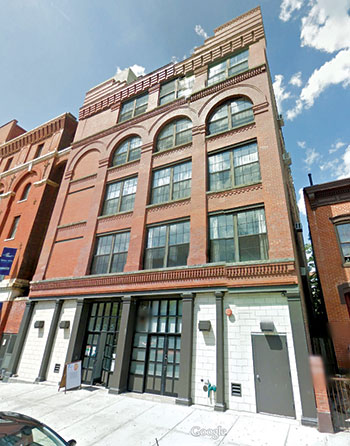
Bronx Bricks
Lofts in the nearby Clocktower building boast some of the highest rents in the borough. A one-bedroom fetches around $1,700 a month, a two-bedroom around $2,000. Recently, the apartment complex, on the corner of Bruckner Boulevard and Lincoln Avenue, had its rooftop upgraded with new pagoda-shaped garden trellises and funky furniture, where residents can sit to enjoy the sweeping views of the Bronx, Manhattan and the Harlem River.
What’s more, the menus of a burgeoning restaurant scene along Bruckner Boulevard provide hints to the changing nature of the neighborhood. At the Mott Haven Bar & Grill, specialties include quinoa black bean burgers and Israeli salads; a restaurant called Ceetay offers Asian fusion food; and a soon-to-open coffee shop nearby will double as a tapas bar.
“I think Mott Haven has all the makings of the next Williamsburg,” said Marlene Cintron, president of the Bronx Overall Economic Development Corp. “There are new developments, restaurants, rehabbed buildings and an easy commute to Manhattan.”
Douglas Elliman broker Charles Brophy was more tempered in his assessment: he thinks activity in the South Bronx is slowly picking up. “I wouldn’t go as far as to say it’s going to be the next Wililamsburg. But the Bronx is set for growth,” he said. “The borough has one of the highest rates of unemployment, and with additional retail and potential employers moving into the South Bronx, more people will be populating the area.”
Other neighborhoods are also benefiting from the growing interest in the borough. Along the Grand Concourse, New Rochelle-based developer Goldfarb Properties plans 184 luxury rentals. The amenities there will include a 24-hour doorman and a fitness center — add-ons more typically found in Manhattan and Brooklyn neighborhoods than in the South Bronx. And the nearby New Deal-era Bronx General Post Office, recently purchased by Youngwoo & Associates and the Bristol Group for $19 million, will soon house new retail and eateries.
On City Island, Manhattan-based developer Greystone recently launched a waterfront 43-unit condo building. It’s the first residential development there in more than 15 years. Prices are estimated to start at $478,000.
“”The Bronx is finally getting its piece of the economic pie,” said Cintron. “We’re not going to stop until every neighborhood in this borough benefits.”




